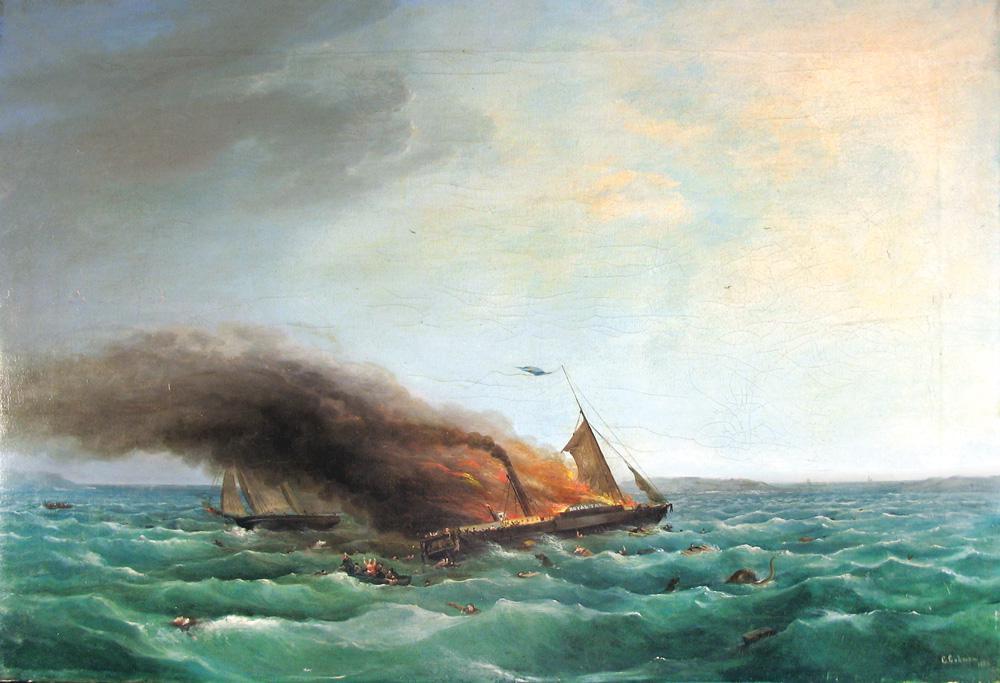The Art Gallery of Nova Scotia houses one of the more unique permanent collections in the country. Aside from representing works by major figures in Canadian art history and the contemporary Canadian scene, the gallery also hosts a stand-out folk-art collection that is as good as any folk-art collection anywhere. If you think, for instance, that you know Maud Lewis from the plethora of reproductions of her cats and country scenes, you will think again when you confront the bracing reality of her tiny home, now safely relocated from Digby and installed in the gallery. Its painted shutters and doors rewrite the whimsicality of the paintings into a story of personal triumph over poverty and isolation. No bigger than an average-size room, the Lewis house is haunting in its smallness and bare-bones comforts. She painted all those paintings here? Under these circumstances? What a remarkable person she was to have fought against the limitations of her life with flowers, bright colours and kittens.
The folk-art highlights are matched by the AGNS historical-art collection, which features works dating back through the colonial history of the province. This pre-Confederation window, beginning in the early 1700s, presents a stellar reminder of the province as an internationalist way station for British, French and American interests, as well as for the aesthetic remnants of European classicism that suffuse many of the works with a bright and optimistic gentility. Last year the tone shifted with a loan exhibition (from Nova Scotia Archives) of Charles Codman’s The Burning of the Royal Tar, a New Brunswick–built steamship that caught fire and floundered on a fall voyage south to Portsmouth, Maine, in 1836. The painting shows the listing boat in a stiff wind that fans the onboard flames and spills black smoke leftwards under a darkening sky. In the hollows of Codman’s popping grey-green waves are imperilled passengers and an array of terrified animals that have jumped ship. The animals make the picture into Life of Pi circa 1836, and turn a modest 19th-century marine painting into a compelling act of reportage that captures a moment otherwise now disappeared from history. A rush to Google and a search for Codman and the name of the ship frames the story. The animals—which include an elephant, a tiger, two lions and a zebra—were part of a touring circus troupe, Burgess and Dexter’s Zoological Institute, which had just finished a three-month tour of the Maritimes. None of the circus animals survived. More than 30 of the 93 passengers drowned. The picture shows them all still alive. Codman scales them to the landscape. It is a picture where space and weather equal fate and the narrative is left to us to imagine. It opens a door onto all of the history we don’t know, all of the history that, thanks to painting, seems eternal.
This is a feature article from the Spring 2014 issue of Canadian Art. To read more from this issue, visit its table of contents. To read the entire issue, get a copy on newsstands or the App Store until June 14.

 Charles Codman, The Burning of the Royal Tar, October 24, 1836. 1836. Oil on Canvas, 60.8 x 88.5 cm. Gift of F.R. Godfrey, 1940. Courtesy Nova Scotia Archives, 1979—147.71
Charles Codman, The Burning of the Royal Tar, October 24, 1836. 1836. Oil on Canvas, 60.8 x 88.5 cm. Gift of F.R. Godfrey, 1940. Courtesy Nova Scotia Archives, 1979—147.71







